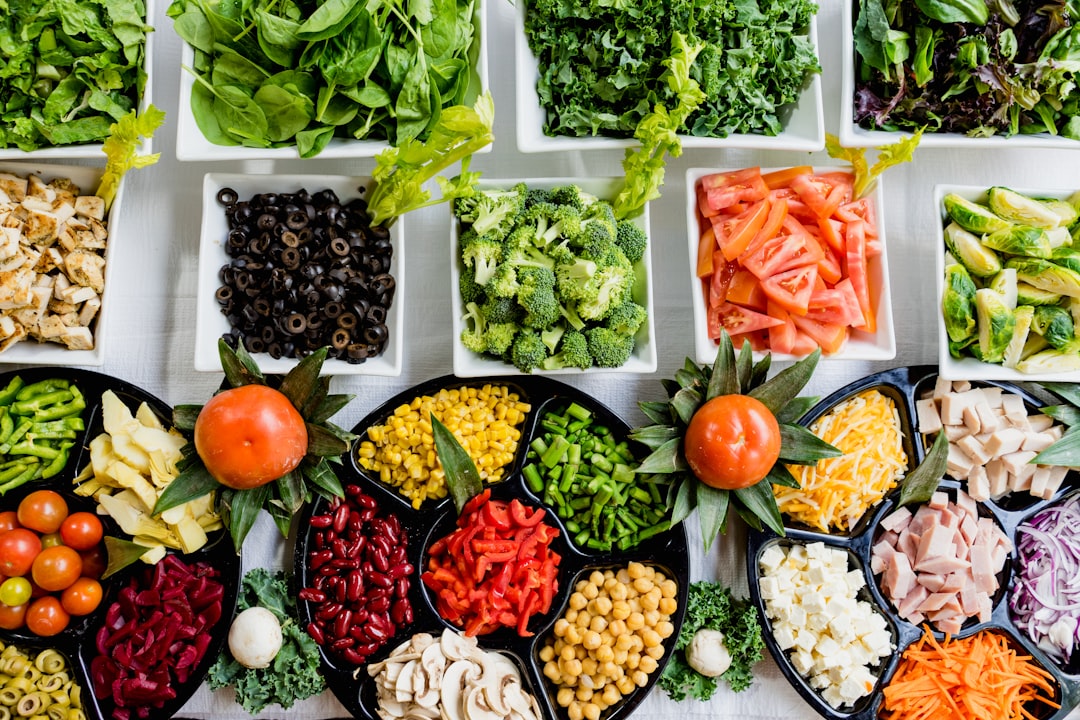Eating is a fundamental aspect of human life, and it affects us in more ways than we can imagine. However, most people rarely stop to think about what they eat, nor do they pay attention to how they eat. It’s not uncommon to see people stuffing their faces with food while watching their favorite TV shows, driving, or even when working. Fast-paced modern life has made it hard to find the time to eat mindfully. But in the 21st century, where we have access to a wide variety of diets and food choices, it’s more important than ever to think about how we eat.
That’s where mindful eating comes in. Mindful eating is a practice that encourages us to pay attention to our food, to be present in the moment, and to enjoy every bite of what we consume. It’s not just about what we eat but also how we eat. This means becoming aware of our hunger signals, learning to savor the flavors, and being mindful of the impact our food choices have on our bodies, minds, and the planet.
The good news is that learning to eat mindfully does not require any special skills or expensive equipment. It’s a practice that anyone can adopt, and it’s something that can benefit us in numerous ways. From improving our overall health to our relationships with food, mindful eating is a lifestyle change that can transform the way we think about and consume food.
So, join me as we dive deeper into the importance of mindful eating and explore practical tips for mastering the art of mindful eating.
Tune In to Your Hunger Signals – The Secret to Eating Mindfully
Eating is a ubiquitous part of our daily lives, but how often do we take the time to truly tune in to our hunger signals and eat mindfully? With the rise of fast food and convenience culture, we have become accustomed to eating quickly, often on the run, and in large portions. This phenomenon has led to an obesity epidemic, where the majority of adults and children are overweight or obese. Therefore, it is essential that we learn to eat mindfully to address this alarming trend and improve our overall physical and mental health.
To eat mindfully, we must learn to pay attention to our body’s hunger and satiety signals. This requires us to slow down, take time to eat, and eat only when we are hungry. When we listen to our body signals, we can learn how much we need to eat to satisfy our hunger, preventing overeating.
However, tuning in to your hunger and satiety signals can be challenging, especially if you are used to ignoring your body’s signals. The first step is to develop an awareness of your body’s feelings of hunger and satiety. You can start by checking in with yourself regularly throughout the day and rating your hunger and fullness levels on a scale of 1-10. This can help you identify patterns and learn to recognize your body’s signals.
Another helpful strategy is to eat slowly and mindfully. Take the time to notice the smells, flavors, and textures of the food you are eating. Chew each bite thoroughly and put down your fork or spoon between bites. This allows you to fully enjoy your food and gives your body time to register when you are full.
By tuning in to your hunger signals and eating mindfully, you can learn to eat in a way that is both satisfying and nourishing. This can help you maintain a healthy weight, reduce your risk of chronic diseases, and improve your overall well-being. So, take the time to listen to your body’s signals and start eating mindfully today!
However, tuning in to your hunger and satiety signals can be challenging, especially if you are used to ignoring your body’s signals.
Make Food Your Best Friend, Not an Enemy – Understanding Your Relationship with Food
Food is often perceived as an enemy in the modern world – something we either restrict, avoid, or indulge in excessively, depending on our mood and circumstances. However, this mindset is not only detrimental to our physical health but also to our mental and emotional well-being. Mindful eating, therefore, requires us to shift our perspective from “food as an enemy” to “food as a friend.”
To do this, we need to understand our relationship with food and the underlying factors that shape it. For instance, we may have developed certain food habits based on our upbringing, cultural traditions, social norms, emotional needs, or physical cravings. We may also associate certain foods with comfort, pleasure, or stress relief, and use them as a coping mechanism for life’s challenges.
Furthermore, we may have internalized various messages about food from the media, the food industry, or health authorities, which can be conflicting and confusing. For example, we may have been told that certain foods are “good” or “bad,” that we should “eat to live” or “live to eat,” that we should follow a certain diet plan, or that we should avoid certain food groups altogether. These messages can create a sense of guilt, shame, or anxiety around food, and interfere with our ability to listen to our body’s wisdom.
Therefore, the first step towards making food our friend is to cultivate awareness and curiosity about our relationship with food. We need to examine our thoughts, feelings, and behaviors around food without judgment or self-criticism. We need to ask ourselves questions such as:
– What role does food play in my life?
– How do I feel when I eat certain foods?
– When do I eat out of hunger, and when do I eat for other reasons?
– How do I react when I can’t have the food I want?
– How do I talk to myself about my eating choices?
– How do I feel after a meal?
By answering these questions honestly and compassionately, we can begin to uncover the patterns and beliefs that influence our relationship with food. We can also start to develop a sense of curiosity and gratitude towards food, rather than fear and restriction.
Ultimately, mindful eating is not about perfection or restriction, but about self-awareness and self-care. It’s about learning to trust our body’s signals, enjoy food with all our senses, and nourish ourselves in a way that feels nourishing, energizing, and satisfying. By making food our friend, we can cultivate a healthier and more joyful relationship with our body, mind, and the world around us.
It’s about learning to trust our body’s signals, enjoy food with all our senses, and nourish ourselves in a way that feels nourishing, energizing, and satisfying.
Become a Connoisseur – Learn to Taste and Appreciate Food
Most of us eat to satisfy our hunger or to simply fuel our bodies. We eat on the go, while working, or while watching television. We barely pay any attention to the food we eat, how it tastes, and how it makes us feel. Mindful eating is about changing this relationship with food. It is not just about eating slowly or paying attention to our hunger signals but it’s also about savoring every bite and experiencing the flavors, textures, and aromas of the food we eat.
To become a connoisseur of food, we need to engage all our senses when eating. It starts with understanding the basics of taste. There are five basic tastes- sweet, salty, sour, bitter, and umami. Each taste has a different receptor on our tongue, and each has its unique purpose. Our taste buds can detect millions of flavors, making each food item a unique experience.
The first step to becoming a connoisseur of food is to understand the flavor profile of different foods. Different flavors work together to create taste, and identifying these flavors can heighten our enjoyment of food. For example, when we bite into a pizza, we can taste the mozzarella cheese, tangy tomato sauce, spicy pepperoni, and fresh basil. We can take a moment to appreciate the complexity of flavors.
Tasting food mindfully not only brings enjoyment but also helps us control our portions. Mindful eating teaches us to stop eating when we feel satisfied, not when we feel stuffed. By paying attention to the flavors, we can slow down and savor the food we eat. We can take small bites, chew our food properly, and swallow before taking the next bite. This way, we give our body a chance to process the food and signal to our brain when we are full.
In conclusion, mindful eating is about transforming the way we think about food. By becoming a connoisseur and learning to appreciate food, we can nourish our bodies while enjoying every bite. We can savor our meals, explore new flavors, and make positive changes in our eating habits. Mindful eating is not just a fad or a diet trend, but it is a way of life, and the benefits it brings are long-term and life-changing.
To become a connoisseur of food, we need to engage all our senses when eating.
Mindful Eating on a Budget – How to Eat Well Without Breaking the Bank
Eating healthy has a reputation for being expensive, but it doesn’t have to be. Mindful eating can be done on a budget with a little bit of planning and creativity. In this section, we will explore some tips on how to eat well without breaking the bank.
The first step to mindful eating on a budget is to plan your meals in advance. Take some time at the beginning of each week to create a meal plan and shopping list. This will help you avoid impulse buying and allow you to stick to a budget.
When creating your meal plan, think about incorporating budget-friendly foods such as beans, lentils, and whole grains. These foods are affordable, nutrient-dense, and can be used in a variety of dishes. They are also high in fiber, which will help you feel full and satisfied for longer periods of time.
Buying in bulk can also be a cost-effective way to stock up on healthy foods. Purchasing items like nuts, seeds, and grains in bulk can save you money in the long run. Additionally, buying frozen fruits and vegetables can be a smart choice as they are often cheaper than fresh produce and last longer.
Another way to save money on mindful eating is to cook at home instead of eating out. Eating out can be expensive and often involves consuming large portion sizes and unhealthy ingredients. By cooking at home, you have control over the ingredients and portion sizes, which can help you stay on track with your healthy eating goals.
When grocery shopping, try to stick to the perimeter of the store, where the fresh foods are located. Processed and packaged foods can be more expensive and often contain unhealthy additives. Shopping for produce that is in season can also save money and provide you with the freshest and most flavorful ingredients.
In conclusion, mindful eating can be done on a budget with some planning and smart choices. By incorporating budget-friendly foods, buying in bulk, cooking at home, and shopping for fresh produce, you can eat well without breaking the bank. Remember, mindful eating is not just about what you eat, but also how you approach food and your relationship with it. With these tips, you can make mindful eating a part of your healthy lifestyle.
With these tips, you can make mindful eating a part of your healthy lifestyle.
Mindful Eating in Real Life – Practical Tips for Mastering the Art of Mindful Eating
Implementing mindful eating into your day-to-day life may seem daunting, but with these practical tips, you will be able to master the art of mindful eating in no time.
1. Slow Down: Take your time while eating, and savor every bite. This helps your body to recognize when it is full, prevents overeating, and promotes digestion.
2. Create a Calm Environment: Enjoy your meals in a relaxed atmosphere, without any distractions such as television, phone calls, or work. This way, you can focus all your attention on your food and your body’s sensations while eating.
3. Listen to Your Body: Take a few deep breaths before eating and pay attention to your body. Notice how you feel hunger and fullness. This way, you can choose to eat only when you are hungry and stop eating when you are full.
4. Engage Your Senses: Engage all your senses while eating. Smell the aromas, really taste the flavors, and appreciate the textures. When you are fully present with your food, you will find it easier to recognize when you are satisfied and have had enough to eat.
5. Be Present with Each Bite: Take small bites, and pause between each bite. This will give your body time to register the food and your mind time to appreciate the taste.
6. Choose Quality over Quantity: Opt for high-quality, whole foods that have been prepared with care. This means avoiding processed and packaged foods and choosing fresh fruits and vegetables, lean proteins, and whole grains.
7. Practice Gratitude: Spend a moment before eating to express gratitude for your food and the nourishment it provides. This helps you to appreciate your food and develop a more positive relationship with eating.
By implementing these practical tips into your daily life, you will soon find that mindful eating comes more naturally to you. Not only will you feel more in control of your eating habits, but you will also enjoy a more positive relationship with food and feel more connected to your body.
3.
Conclusion: Why Mindful Eating is More Than Just a Trend, It’s a Lifestyle
As we come to the end of our discussion on mindful eating, it’s important to note that this is more than just a trend. It’s a lifestyle that can have a significant impact on your physical, mental, and emotional well-being. By taking the time to tune in to your hunger signals, making peace with food, and appreciating what you’re eating, you can change the way you approach food and ultimately improve your relationship with it.
Moreover, mindful eating can help you control your eating habits, reduce stress and anxiety, and even aid in weight management. By focusing on the present moment, you’ll be less likely to overeat or indulge in unhealthy foods, and more inclined to nourish your body with wholesome, nutrient-rich options.
And the best part is, mindful eating can be adapted to any lifestyle and budget. You don’t have to spend a lot of money or go to fancy restaurants to appreciate food and eat mindfully. With a little creativity, you can make mindful eating a part of your everyday life.
So, if you’re looking to transform your eating habits and cultivate a healthier relationship with food, consider adopting a mindful eating approach. It may take some practice and patience, but the benefits are well worth it. Remember, change doesn’t happen overnight, but every small step counts towards a bigger goal. Start by being more aware of what you’re eating and how you’re feeling, and let the journey towards mindful eating begin.





